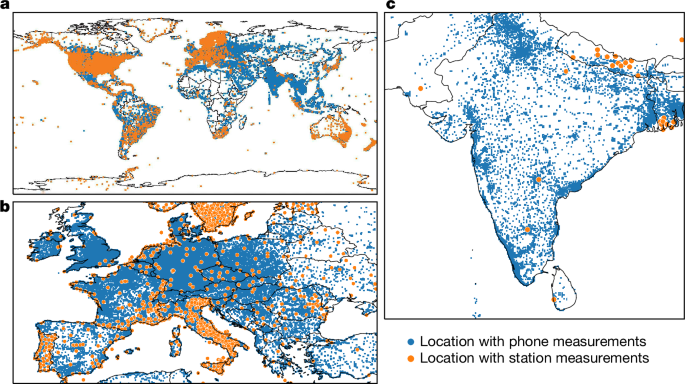
Mapping the ionosphere with millions of phones
Nature volume 635, pages 365–369 (2024 )Cite this article
The ionosphere is a layer of weakly ionized plasma bathed in Earth’s geomagnetic field extending about 50–1,500 kilometres above Earth1. The ionospheric total electron content varies in response to Earth’s space environment, interfering with Global Satellite Navigation System (GNSS) signals, resulting in one of the largest sources of error for position, navigation and timing services2. Networks of high-quality ground-based GNSS stations provide maps of ionospheric total electron content to correct these errors, but large spatiotemporal gaps in data from these stations mean that these maps may contain errors3. Here we demonstrate that a distributed network of noisy sensors—in the form of millions of Android phones—can fill in many of these gaps and double the measurement coverage, providing an accurate picture of the ionosphere in areas of the world underserved by conventional infrastructure. Using smartphone measurements, we resolve features such as plasma bubbles over India and South America, solar-storm-enhanced density over North America and a mid-latitude ionospheric trough over Europe. We also show that the resulting ionosphere maps can improve location accuracy, which is our primary aim. This work demonstrates the potential of using a large distributed network of smartphones as a powerful scientific instrument for monitoring Earth.
There are billions of smartphones worldwide, each equipped with a powerful processor and a wide array of sensors. Although these sensors are generally of lower quality than those in conventional scientific instruments, the number and ubiquity of smartphones offer advantages over existing infrastructure in coverage and resolution. In this paper, we produce maps of the ionospheric total electron content (TEC) using satellite navigation signals from millions of smartphones equipped with dual-frequency Global Navigation Satellite System (GNSS) receivers.


















